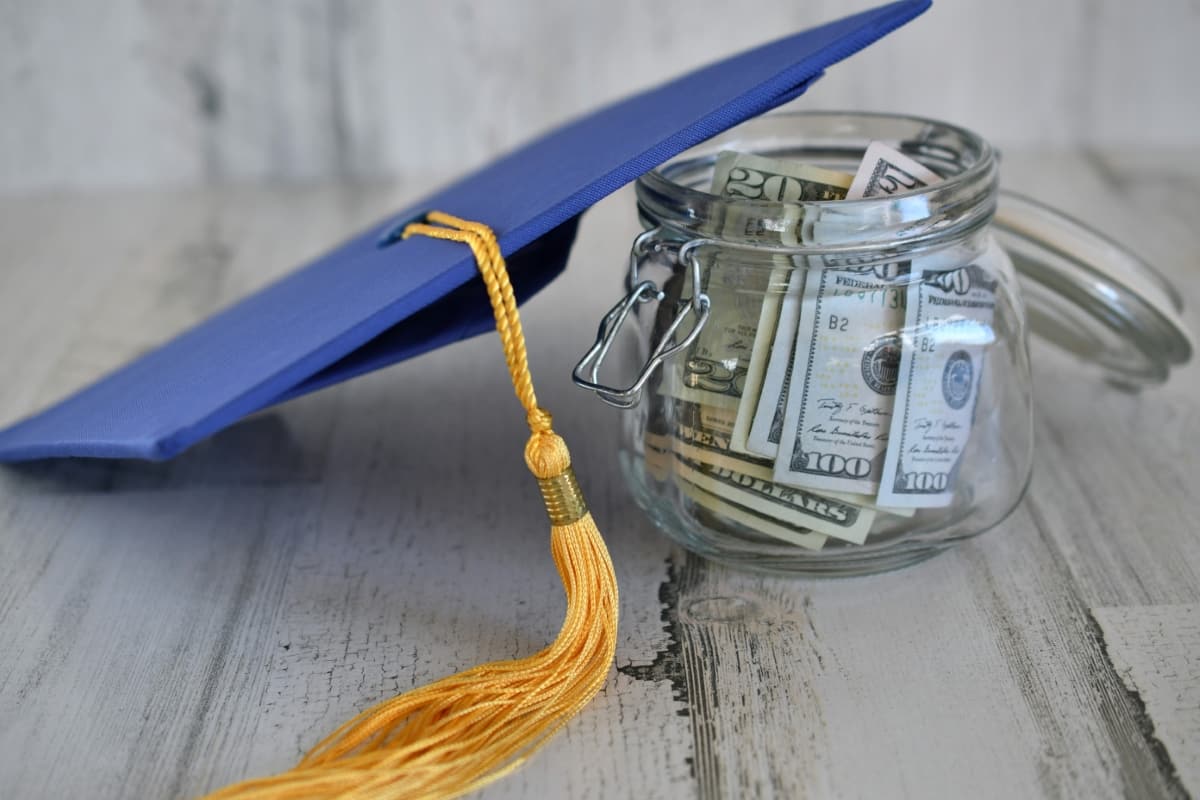Recently, student debt forgiveness has become a central topic in economic and educational discussions within the United States. With many eagerly waiting to find out when will student loan forgiveness be applied and the student loan forgiveness update from the Supreme Court, there’s a whirl of anticipation and speculation.

The Department of Education’s student loan forgiveness plans are under constant scrutiny and evaluation, adding another layer to the ongoing debates. Questions such as how will student loan forgiveness be paid for are also prevalent as people seek clarity on the government’s plans and strategies moving forward.
Student Debt Forgiveness Plans in the United States
Basics of Student Debt Forgiveness Programs in the United States
Student debt forgiveness programs in the United States are designed to relieve graduates from the burden of hefty educational loans. These programs primarily target federal student loans, allowing qualifying borrowers to have part or all of their student loan debts canceled.
The eligibility for these programs often hinges on the borrower’s occupation, repayment plan, and the number of payments already made. Specific programs like Public Service Loan Forgiveness (PSLF) and Teacher Loan Forgiveness are tailored to encourage graduates to pursue careers in public service and education, sectors that are often underfunded but vital for societal development.
Exploring the Benefits and Drawbacks of Student Loan Forgiveness
Student loan forgiveness carries a mixture of benefits and drawbacks that are pivotal to understanding the broader impact of these programs. On one side, it can alleviate financial stress from borrowers, allowing them to focus on career development and personal growth without the cloud of mounting debts.
It may also encourage more students to pursue higher education, knowing they might not be shackled by loans indefinitely. On the flip side, forgiveness programs can also be seen as unfair to those who have diligently paid off their loans. Moreover, it raises questions on fiscal responsibility and whether it might encourage future students to take loans recklessly, expecting future debts to be forgiven.
The Role of Government in Implementing Student Debt Forgiveness Plans
The government plays a pivotal role in implementing and managing student debt forgiveness plans. Their involvement ranges from setting eligibility criteria and monitoring compliance to funding the forgiveness programs. Strategies are continually evolving, ensuring that the system remains robust, fair, and supportive of broader economic and educational objectives. Legislative and supreme court decisions, too, play a significant role in shaping the contours and effectiveness of these plans, ensuring they align with legal precedents and public interests.
Analyzing the Economic Implications of Student Loan Forgiveness
When analyzing the economic implications, it’s essential to consider how student loan forgiveness will be paid for. The direct impact of forgiveness includes increased disposable income for beneficiaries, possibly leading to higher consumer spending and a stimulated economy. However, it also comes with fiscal challenges, such as determining the funding sources for these forgiveness programs and understanding their influence on the national debt and broader economic policies and priorities.
Examining Different Approaches to Student Debt Relief in the United States
Various approaches can be taken toward student debt relief in the United States, each with implications and considerations. Besides forgiveness, these include income-driven repayment plans, deferment and forbearance options, and private refinancing. Each method has its eligibility criteria, benefits, and drawbacks, offering borrowers multiple avenues to manage and alleviate their student debts based on their financial situations and long-term goals.
In case you missed it: The Pros and Cons of Using a Roth IRA for Retirement Savings

Evaluating the Eligibility Criteria for Student Loan Forgiveness
Evaluating the eligibility criteria involves closely examining the various requirements set by the government and other institutions for borrowers to qualify for loan forgiveness. These criteria often revolve around the type of loan, the borrower’s occupation, repayment history, and financial need. Meeting these requirements is crucial for borrowers, ensuring they benefit from the available forgiveness programs and navigate their debts effectively and responsibly.
Debunking Common Misconceptions About Student Debt Forgiveness
Several misconceptions surround student debt forgiveness, often leading to confusion and misinformation. Many people think it’s easy to get rid of student loans, but that’s not true for everyone or all loans. In reality, strict eligibility criteria and limitations apply, making it essential for borrowers to thoroughly understand and evaluate the applicability and benefits of these programs in their specific circumstances and based on their unique loan types and financial histories.
Comparing Different Student Loan Forgiveness Plans in the United States
Several student loan forgiveness plans operate in the United States, each with unique characteristics and aims. Programs like Public Service Loan Forgiveness (PSLF) and Teacher Loan Forgiveness focus on encouraging careers in public service sectors such as teaching and non-profit employment.
Other options, like Income-Driven Repayment Forgiveness (IDR), focus on providing relief based on the borrower’s income and family size. Comparing these plans involves evaluating eligibility criteria, the amount of debt forgiven, and the required timeframe for forgiveness, allowing borrowers to select a plan that aligns with their financial and career objectives.
The Impact of Student Loan Forgiveness on Borrowers’ Financial Futures
Student loan forgiveness can significantly impact borrowers’ financial futures by alleviating the burden of student debt. For many, this could mean greater financial freedom, increased ability to save, invest, or spend, improving credit scores, and providing more flexibility in career choices and life decisions. It can act as a financial catalyst, enabling individuals to pursue opportunities and make decisions that might have been untenable with the persistent burden of student debt.
In case you missed it: The Benefits of Investing in International Markets

Exploring Alternatives to Traditional Student Debt Forgiveness Programs
Exploring alternatives to traditional student debt forgiveness involves looking beyond standard forgiveness programs to find other viable options for debt relief. These alternatives could include income-driven repayment plans, which base monthly payments on one’s income, private loan refinancing, and even exploring employer-sponsored repayment assistance. These options offer different pathways for borrowers to manage their student debts in ways that align with their financial capabilities and life goals, broadening the landscape of possibilities for debt management and relief.
Frequently Asked Questions (FAQ) on Student Debt Forgiveness Plans in the USA
Do I Qualify for Student Loan Forgiveness in the USA?
To ascertain your eligibility for student loan forgiveness in the United States, assess criteria including your employment status, income level, loan type, and repayment track record. Specific eligibility criteria vary among different forgiveness programs, so research and understanding each program’s requirements are essential.
What Happens to Student Loan Debt Forgiveness?
Student loan debt forgiveness involves canceling a portion or all of a borrower’s educational debt. After meeting certain eligibility criteria and program requirements, the forgiven amount is no longer required to be paid, relieving the borrower from the respective financial obligation.
How Does Debt Forgiveness Work?
Debt forgiveness works by canceling the debt owed by a borrower after they meet specific eligibility and program requirements. This can apply to various types of debts, including student loans, where borrowers, upon meeting certain conditions, are relieved from further repayment obligations.
In case you missed it: Government Loan for Startup Business in India: Eligibility and Application Procedure

Conclusion
Understanding the multifaceted dimensions of student loan forgiveness is crucial for borrowers seeking relief from educational debts in the United States. Comprehensive knowledge, ranging from eligibility criteria to economic implications, enables informed decision-making, facilitating the navigation through various options and programs available for debt management and forgiveness.
- Handicraft Making at Home: A Small Profitable Business Idea
- Pet-Tech Startups: Innovations for Animal Lovers
- Tech Repair Services: Meeting the Demand for Gadget Maintenance
- Maximizing Rewards: Smart Credit Card Habits for Cashback and Points
- Ultimate Guide to Making Money from Goat Milk Business
- How to Start an Agricultural Value Added Product Business
- Value-Added Business Ideas for Greenhouse: The Best Ways to Make Profits with Greenhouse Farming
- How to Make Profits with Organic Country Chicken: Best Strategies for Beginners
- 10 Value-added Business Ideas for Millets: Low-investment and Highly Profitable